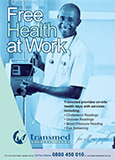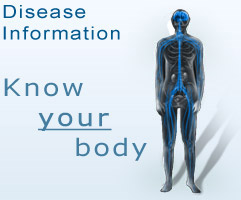Renal replacement therapy
Renal replacement therapy is treatment for severe kidney failure, also called renal failure and end-stage renal disease. When the kidneys are no longer working effectively, waste products and fluid build up in the blood. Renal replacement therapies take over some of the functioning of the failing kidneys.
Renal replacement therapy is typically required when about 90 percent or more of kidney function is lost. Early in the course of kidney disease, other treatments are used to help preserve kidney function and delay the need for replacement therapy. Treatment of the underlying disease is done, as well as of other factors that promote disease progression (such as hypertension) and the complications of chronic kidney disease.
As the kidneys lose their ability to function, fluid and waste products begin to build up in the blood. Abnormalities in blood chemistry, malnutrition, high blood pressure (hypertension), bone disease and anaemia can also occur as a direct result of kidney failure.
Pre-dialysis care
This is care that patients who potentially have to undergo dialysis or transplantation, will receive from their specialist units. It prepares the patient for the process of moving into dialysis or renal transplantation and ensures that patients enter these modalities of treatment without the usual complications that frequently lead to emergency admissions that lead to renal replacement therapy.
It mainly consists of general medical advice, nutritional advice, regular follow-ups, preparation of the dialysis site should this become imminent and early searches for renal transplant donors.
Renal replacement therapy
There are three types of renal replacement therapy:
1. kidney transplantation
2. haemodialysis
3. peritoneal dialysis
Patients and family should discuss all of the options with their healthcare provider in order to make an informed decision.
1. Kidney transplantation
Kidney transplantation is the treatment of choice for many patients with severe chronic kidney disease because quality of life and survival are often improved, compared to patients who use dialysis. There is a shortage of organs available for donation, so many patients who are candidates for transplantation are put on a transplant waiting list and require other forms of renal replacement therapy until a kidney becomes available.
A kidney can be taken from a living relative, a living unrelated person, or from a person who has died (deceased or cadaver donor). A person only requires one kidney to survive. In general, organs from living donors function better and for longer periods of time than those from donors who are deceased.
Some patients with renal failure are not candidates for a kidney transplant. Older age and severe heart or vascular disease may mean that it is safer to remain on dialysis rather than undergo kidney transplantation. Other conditions that exclude a person from being eligible for transplantation include:
- untreated current infection
- active or recently treated cancer
- a chronic illness that results in a life expectancy of less than a few years
- poorly-controlled mental illness (psychosis)
- severe obesity (a body mass index greater than 40)
- inability to remember medication
- active drug or alcohol abuse
In selected cases, patients may be eligible for transplantation if they have well-controlled HIV infection. Patients with other medical conditions are also evaluated on a case-by-case basis to determine their suitability for transplant.
Advantages - Kidney transplantation is the treatment of choice for many patients with end-stage renal disease.
Disadvantages - Kidney transplantation is a major surgical procedure that has risks associated with the procedure as well as the treatment following transplantation. The risks include infection, bleeding and damage to the surrounding organs. After transplantation, patients must take medication to prevent rejection of the new organ and are monitored for signs of organ rejection. Medication and monitoring will be required for the rest of the patient's lifetime. Immunosuppressive medication can have significant and bothersome side-effects in many patients.
2. Haemodialysis
In haemodialysis, the patient's blood is pumped through a dialysis machine to remove waste products and excess fluids. The machine works by putting the patient's blood in contact with dialysate solution. The blood is separated from the dialysate by a membrane that allows substances to move from the blood to the dialysate. Substances that are found in high concentrations in the blood, such as the waste products the kidney normally removes, are in lower concentration or not present in the dialysate. The process causes these substances to move from the blood across the membrane and into the dialysate. The blood is continuously returned to the body and the dialysate is continuously replaced with fresh solution.
The patient is connected to the dialysis machine using a surgically created path. This allows blood to be removed from the body, circulate through the dialysis machine and then return to the body.
The best type of access, called an arteriovenous (AV) fistula or shunt, is surgically created between an artery and a vein in the lower arm. It needs to be placed two to four months before it can be used for dialysis. Sometimes other ways of access by plastic cannula (pipe), called grafts, have to be used. This type of access can be used in two weeks. A third type of access, a central venous line, can be placed (usually in the neck) and can be used immediately. However, it is more prone to complications and should only be used if no other route is available.
Haemodialysis can be done at a dialysis centre or at home. When done in a centre, it is generally done three times a week and takes between three and five hours per session.
Home dialysis is generally done three to seven times per week and takes between three and ten hours per session. Home dialysis can be done at a time that is convenient for the patient. Patients are generally required to have someone else (a family member, friend, or technician) to assist them before, during and after dialysis.
A healthcare provider must be available by telephone in case questions or problems arise; some machines allow the patient to be monitored remotely via the telephone or internet.
Advantages - It is not known if haemodialysis has clear advantages over the other type of dialysis (peritoneal dialysis) in terms of patient survival. The choice between the two types of dialysis is generally based on other factors, including patient preference, home support and underlying medical problems. Patients begin with the type of dialysis preferred by both themselves and their doctors, although it is possible to switch to another type as circumstances and preferences change.
Disadvantages - Low blood pressure is the most common complication of haemodialysis and can be accompanied by light-headedness, shortness of breath, abdominal cramps, nausea or vomiting. Treatments and preventive measures are available for these potential problems. In addition, the access can become infected or develop blood clots. Many patients who receive haemodialysis in a centre are either unable to work or choose not to work due to the time required for treatment and transportation.
3. Peritoneal dialysis
Peritoneal dialysis is typically done by the patient or family member at home. It requires that someone be trained in the use of the equipment and that the patient has a catheter surgically inserted in the abdomen. The catheter is made of soft, flexible material and is usually placed near the umbilicus (belly button). The patient may receive general or local anaesthesia during the insertion procedure. Although the catheter can be used right away, it is best to wait 10 to 14 days after placement before a full course of treatment is used. This allows the catheter site to heal.
In peritoneal dialysis, dialysis fluid (called dialysate) is infused into the abdomen through the catheter. The fluid is held within the abdomen for a prescribed period of time (called a dwell). The lining of the abdomen (the peritoneal lining) acts as a membrane to allow excess fluids and waste products to diffuse from the bloodstream into the dialysate. During each cycle (often called an exchange) the dialysate in the abdomen is drained out and discarded. The peritoneal cavity is then filled again with fresh dialysate.
This may be done manually four to five times during the day by infusing the fluid into the abdomen and later allowing it to run out by gravity. The process of emptying and filling for each exchange takes 30 to 40 minutes when done manually. The exchange may also be done using a machine (called a cycler).
Several different treatment schedules are possible:
- Continuous ambulatory peritoneal dialysis (CAPD) involves multiple exchanges during the day (usually four, but sometimes three or five) with an overnight dwell.
- Continuous cycler peritoneal dialysis (CCPD) is an automated form of therapy in which a machine performs exchanges while the patient sleeps. There may be a long daytime dwell, and occasionally a manual daytime exchange is performed.
CCPD generally allows significantly more uninterrupted time for work, family and social activities than CAPD.
Disadvantages - Disadvantages of peritoneal dialysis include an increased risk of hernia (protrusion of an organ through weak muscle tissue) due to weakening of the abdominal muscles from the intra-abdominal pressure of the dialysate. In addition, patients require several hours per day to perform exchanges (if performing CAPD), can gain weight due to glucose absorption (from the dialysate), have an increased risk of infection at the catheter site or inside the abdomen (peritonitis) and can absorb excessive amounts of fluid during long dwell times.
Choosing replacement therapy
Choosing the best method of renal replacement therapy is a complex decision that is best made by the patient and doctor, and often other family members or caregivers, after careful consideration of a number of important factors.
Where to get more information
Your doctor is the best source of information for questions and concerns related to your medical problem. Because no two patients are exactly alike and recommendations can vary from one person to another, it is important to seek guidance from a provider who is familiar with your individual situation. Your renal replacement unit can also supply you with information.
References:
http://www.uptodate.com
 TransmedBanner4.jpg)

